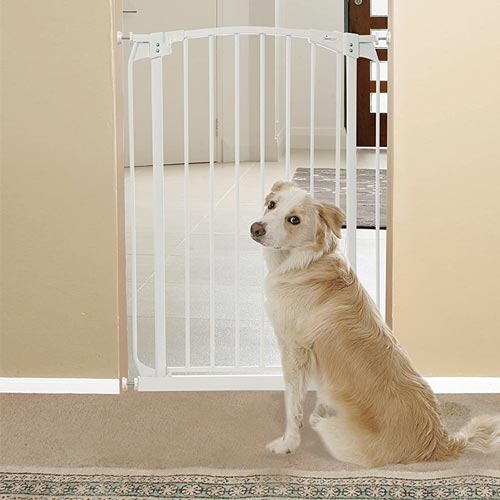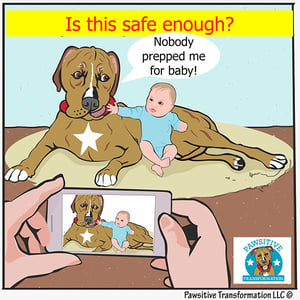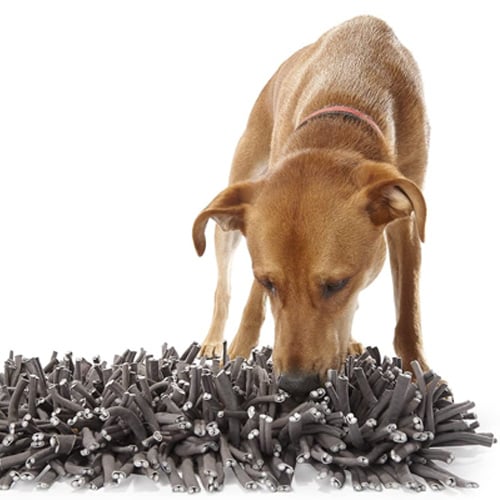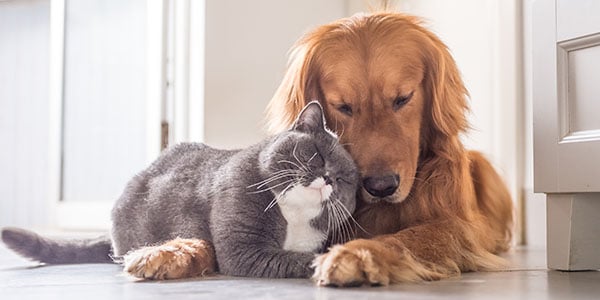
The current coronavirus pandemic means that children are being homeschooled and many parents are working from home. The entire family, including your dog, is spending non-stop quality time together.
Does your dog seem more stressed with all the extra hubbub going on all day?
Are you wondering what you can do to make sure the kids and dogs both stay safe while you get some work done in the office? Want to learn how to get your kids involved with caring for and training the family dog?
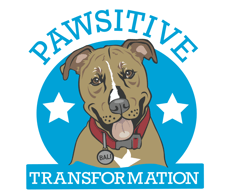
In this episode of Paws and Play, we are excited to introduce our audience to Jennifer Anderson, certified dog trainer and founder of Pawsitive Transformation. Jennifer began her dog training journey as a registered veterinary technician and then rescued a dog named Bali. Raising Bali and working alongside her training mentor Madeline Gabriel (Dogs & Babies) became her inspiration for launching Pawsitive Transformation.
Jennifer now specializes in family-friendly dog training and sat down (virtually) with Mia and Cathy to chat about kids and dog safety, especially during the coronavirus pandemic. She'll share some great ideas for teaching children the right way to greet dogs, talk about what canine body language to watch for, and tips for setting up your home to keep everyone safe and sane!
Listen to the full podcast here:
Tips for Keeping Dogs and Children Safe
Create Multiple Safe Spaces for Your Dog
Safe areas where your dog can take a break go a long way in reducing stress and preventing dog bites. Learn how to create a safe space for your dog in our article "How to Set Up a Safe Space for Your Dog." Jennifer recommends creating multiple safe spaces throughout your home to give your dog options when it comes to how much activity they want to be around:
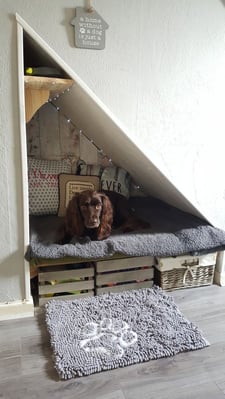
"I think that it's important for [dogs] to have two different areas within the home where they can go voluntarily to not be bothered. To not have toys thrown right in front of their bed or people walking by, or maybe even just being looked at or talked to. They need their own downtime as well. And some dogs don't know how to seek that refuge, so we might have to actually physically guide them to those spots for rest.
"Sometimes I feel a little stressed and I have a favorite chair in our family room. I sit there and I feel a sense of relaxation. But then sometimes I really need to get away and that's when I retreat to my master bedroom and master bath. I look at it as that's my zone one in the family room and zone two is the master bedroom. I like for dogs to have that option too.
It might just be that 'oh, I want to be a few feet away but still see what's going on,' and they can have that bed in the family room or adjacent to that family room or kitchen area. But then it's like 'where's the other spot?', where they can really chill out and relax and decrease the volume, the movement, and the vibrations."
Safe spaces and puppy zones are also a great tool for preventing separation anxiety, especially now with people being home all of the time with their pets.
Home Set-Up is Key!
Creating an environment with safety at top of mind goes a long way in setting kids and dogs up for success, and gives parents some peace of mind when they need to cook, clean, or get other things done around the home.
Use Gates to Create Separation Between Dogs and Children
"I'm a big believer in baby gates." Use gates throughout the home to create a buffer zone for your dog, especially when you have a young child in the home. Jennifer's favorite is the Dreambaby Extra Tall Auto Close gate.
PRO TIP: "As a rule of thumb, as a mom, I'll stick my arms through that gate and make sure my arms can't reach the dog bed," suggests Jennifer. This way a young child won't be able to reach through and bother a resting pup.
Teach your children that when a dog is on their bed or in a designated safe space to leave them in peace. This will prevent a dog from feeling overwhelmed and like they have nowhere to escape to — a situation that often results in a dog bite.
Watch for Signs of Stress in Your Dog's Body Language
With children home all day during the coronavirus pandemic, your family dog is dealing with a lot more physical interaction. We asked Jennifer what things might be happening with this increased daily time together. "They just can't leave the dogs alone, or they're giving dogs hugs and invading the dog's space. And some dogs will voluntarily go up to children and close that gap just trying to express 'child, go away.' But most people don't understand body language that the dog's actually saying 'could you please give me space?'"
Invest time in learning about dog body language that will help you determine when your dog is asking for space, feeling unsure, or about to bite. Check out our dog body language resources page for more information.
"If we guide [children] in a way that's fun and rewarding for a child — if you can tell that this dog really likes what you're doing, or dislikes, think of the bond that will form between you as a child and that dog," says Jennifer. "As opposed to it just being forced or you're thinking that [the bond] is occurring. You can truly understand that in this moment your dog is really enjoying your company."
Dog body language to watch for that indicate stress:
- Licking their lips or flicking their tongue
- Panting
- Yawning
- Tense body
- Whale eye (wide eyes where the whites of the eye show)
- Ears pinned back against the head
- Tail dropped or tucked
Teach Your Children the Polite Way to Say Hi to Dogs
Jennifer talks about a better way to have children greet dogs, whether it's the family dog or dogs they might encounter out and about:
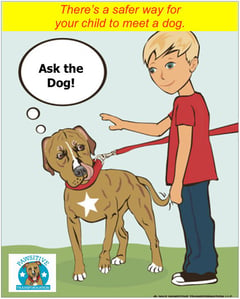
"Many years ago we used to stick out our fist and walk towards a dog. I think that there's a safer option. When my own son was about three, I started teaching him to stop and wave hello. I did that with our own dog Bali. In order to say hi, we stop what we're doing and we wave hi, versus running up and touching. And so it wasn't 'don't do this' it was 'do this instead.' This makes Bali feel happy, this makes Bali feel safe. It's the very first step, just teaching them the right way to say hi."
Allow a dog the choice to approach and interact, rather than initiating that contact. Being able to wave hello from a distance keeps children safe but still allows them to feel like they interacted with the dog.
Getting Kids Involved with Caring for the Family Dog
"My goal with children and dogs is that the dog thinks 'whenever this child is around, I just love my life!'" Jennifer says. To do this, create positive associations for the dog whenever the child is present, and create experiences where the dog receives things they love as long as they are being calm and showing impulse control.
Jennifer recommends involving kids in getting your dog's interactive toys ready, such as a stuffed KONG. Giving the KONG with a baby gate in between can help prevent any physical contact for rambunctious or jumping dogs, or especially if a child is nervous about getting jumped on.
Make Interaction Fun for Both Kids and Dogs
"As children and as adults, we all want to learn when it's fun, right? But then also as adults we start eliminating the "dont-do's." Don't do this. Don't do that. I told you before, right? That is exhausting. That's why I developed a program called Be a Star. [Its purpose] is to teach children how to show love to dogs in ways that dogs appreciate. And then the adults are backing that program up on a daily basis. So we can start going away from the don't dos, and instead, look at what you did!
When you have a child and puppy within the same household, there's no way to prevent physical contact 100 percent of the time. It's more like, let's give our family the options on what to do IF. These puppies are going to be jumping, they're going to have some puppy nipping, their nails are going to be sharp.
One, we want to teach bite inhibition and we don't want puppies chewing on kids. Or maybe the child thinks that it's funny but the child doesn't like to be jumped on. For children, when the puppy is acting like a puppy, but it becomes overwhelming for the child, or maybe the child just doesn't want to get their pretty dress dirty or something like that, normally what I teach them is to believe that they're a tree.
They just pretend that their legs are like roots in the ground, their arms are like branches and they give themselves a hug and they look away from the dog. I'm hoping at that point that the puppy is like wow, you're no fun. You're not running, you're not squealing like a toy, you're not talking to me, not looking at me, I'm just going to walk away from you.
The next approach, if that's not effective, is we teach our child how to calmly back away, get to a parent or to get to the other side of the baby gate."
What Games Can Kids Play With Dogs?
Some go-to games that children can play with dogs, that also help build great dog behavior, is Hide-and-Seek and Puppy Ping Pong. Both of these games build your dog's come-when-called cue.
"I really like it when we can eliminate part of the dog's normal ration of food and create a scavenger hunt in a fenced back yard," suggests Jennifer. "I also really like the snuffle mats, that children can help 'bait' with the dog's kibble." (As a reminder from Preventive Vet, just please be very careful with what your dog puts in their mouths in the yard, as there are many plants and mushrooms that are toxic).
Here are our top two picks for snuffle mats:
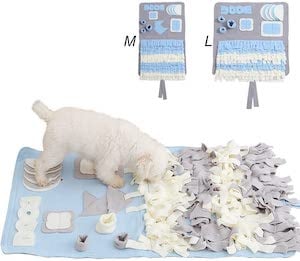
Watch Preventive Vet pup Sookie show you how a snuffle mat works in this video:
Play the 'Believe You're a Tree' Game
"One of the games that I like playing with just children with dogs in the environment — say you have a fenced in yard and it's a nice sunny day. The dog is doing their thing, the child is doing their thing, and all of a sudden the child just starts running. For me, this is a great time to try and teach my child how to go from 60 miles an hour to zero, just in case my dog decides to chase my child — which makes my gut flip," describes Jennifer.
"And I say 'believe you're a tree!' And then my son just stops, his legs are like roots in the ground, he gives himself a hug and he looks down at the ground. And I just have a party! Practicing that moment over and over again, it's like the game red light green light. With the dog I redirect in a way that the dog is expecting something good is about to happen."


